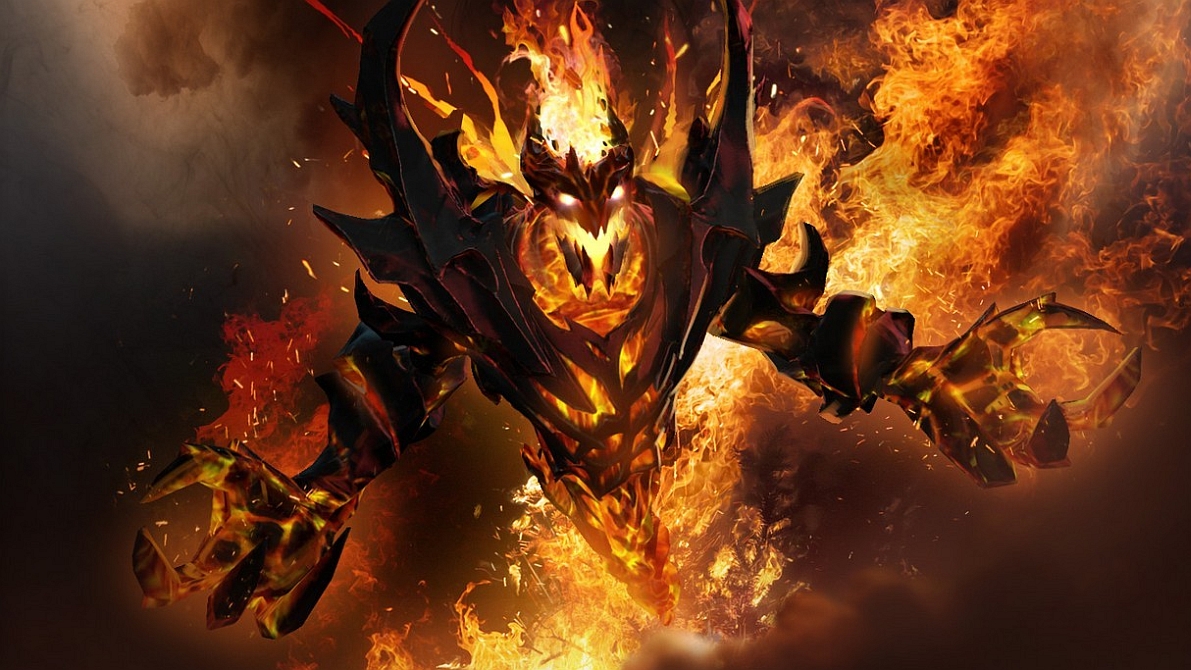What did the Frankfurt group stage reveal about the new Dota 2 meta?

It’s been three months since The International 2015’s conclusion, but competitive Dota is already in full swing with start of the seasonal Dota Majors. The Frankfurt Major isn’t just a massive tournament, but it’s also Valve’s first foray into consistent Dota tournaments outside of The International (and if you're planning on watching this week, you should check out our guide.) Trends set in the now-complete group stage could find themselves repeating in the year to come. So what has The Frankfurt Major revealed about the Dota 2 metagame so far?
From the deep, Slardar rises.
Slardar has been steadily climbing out of the watery depths since the Sprint buffs in patch 6.85, and at Frankfurt he’s comfortably landed as the 6th most picked/banned hero. The fishy melee initiator has splashed himself into a unique situation: he’s not necessarily a dominating offlaner, but he needs so little to be productive that it doesn’t matter.
With level 2 Sprint and a pair of brown boots, Slardar moves at a ridiculous 448 movespeed, with unit phasing. That easily supports ganks across the map, and is slippery enough to escape many of the dangerous safelane matchups. Paired with Slithereen Crush providing at least 1.5 seconds of stun and slow, Slardar has all the tools to be a devastating roamer in the first few minutes of play.
Compared to the similar melee bully Spirit Breaker, Slardar’s stun has a longer duration, a consistent area of effect, provides an additional slow, and isn’t tied to an interruptible charge or random chance. What makes him especially effective after level six is the use of Amplify Damage with other popular heroes like Gyrocopter and Shadow Fiend.
Minimizing the value of a Black King Bar is crucial
The Black King Bar may be at risk of regicide in the current meta. Many of the heroes that are weak to magic immunity, such as Disruptor and Phoenix, are finding themselves left behind for physical or pure damage threats. By limiting the potential mitigation of Black King Bar, it makes the purchase less worthwhile and existing spells more valuable.
A hero like Disruptor is almost entirely shut down by a BKB, but a hero like Ancient Apparition or Undying can still operate in the item’s presence, limiting the effectiveness of the purchase. Top picks like Tusk, Winter Wyvern, Doom, and Slardar fall into a similar position: BKB can be a hindrance, but doesn’t nullify their existence.
We’re seeing a lot more armor reduction in teams
The heavy physical damage brought by anti-BKB teams can stack efficiently when paired with armor reduction items and spells. For instance, Slardar’s Amplify Damage improves the damage of Shadow Fiend, and Shadow Fiend supports Slardar with his armor-lowering aura. Everyone is helping everyone else. By contrast, there are very few ways to synergize magic damage, with only a few debuffs like Skywrath Mage’s Ancient Seal and Ethereal Blade.
Keep up to date with the most important stories and the best deals, as picked by the PC Gamer team.
Armor reduction can also have a huge influence on map objectives like Roshan and occasionally towers. Magic damage is much tougher to use on objectives themselves—it doesn’t scale enough or even work in certain cases. The departure of offensive magic heroes is feels crazy when you consider how common heroes like Lion have been in past events, but they’re just not finding a place in teams today.

Most new or reformed teams couldn’t reach winner’s bracket, except one
The post-TI5 roster shuffle left a lot of questions about the stability of newer Dota teams. From the bigger names like Team Secret and Cloud9, to new groupings like Digital Chaos and Monkey Business, no one knew how the revamped teams would fare against the already-established lineups. Unfortunately, most of the fresh compositions fared poorly, with only a single overhauled team transitioning into the winner’s bracket from group play.
Team Secret successfully dominated their group, only dropping a single game to Newbee.Young. That’s entirely unsurprising, given the veteran talent on Secret. For the other teams with major changes, there’s still time for them to recover in the loser’s bracket. It’s not necessarily their first time competing at this high a skill level, but the added pressure of the three million dollar prize pool and shorter practice time may have left them without enough preparation.
An added note is the success of teams that were directly invited to The Frankfurt Major. Teams made it to the tournament via direct invite or through a series of qualifiers that spanned continents. Despite the tremendous competition for Frankfurt Major slots, Mineski was the only qualifying team to make it into the winner’s bracket from the group stages. A possible takeaway from their success is that the three month period between Majors may not be enough for new teams to form, qualify, and thrive.
All four of the qualifier regions are represented in the winner’s bracket.
The Dota Major and International qualifiers divide themselves into four different regions: China, Europe, The Americas, and Southeast Asia. Of the eight teams going into the winner’s bracket, one is American (Evil Geniuses), three are Chinese (LGD, Vici Gaming, CDEC Gaming), three are European (Secret, Vega Squadron, Virtus.pro), and one is Southeast Asian (Mineski). A positive for the international Dota scene, showing that every region is still competitive.
Despite varied representation, the bulk of winner’s bracket comes from two regions. However, as long as each regional has a competitive team, it can push weaker teams to perform better and improve regions as a whole. It’s when a region is fully unable to place that concern sets in, because without a decently placed team, who’s going to propel a region to the top ranks?
It is a bit unfortunate for Team Unknown however, as the South American team hasn’t won a single game, and can’t reliably scrim versus North American teams without a ping imbalance. Still, the lessons learned this week may catalyse Team Unknown for the future.
With playoffs underway now, it’s anyone’s tournament and the meta could shift again. If competitive Dota has taught us anything, it’s that it’s never too late for everything to change.

PC Gamer Pro is dedicated to esports and competitive gaming. Check back every day for exciting, fun and informative articles about League of Legends, Dota 2, Hearthstone, CS:GO and more. GL HF!

